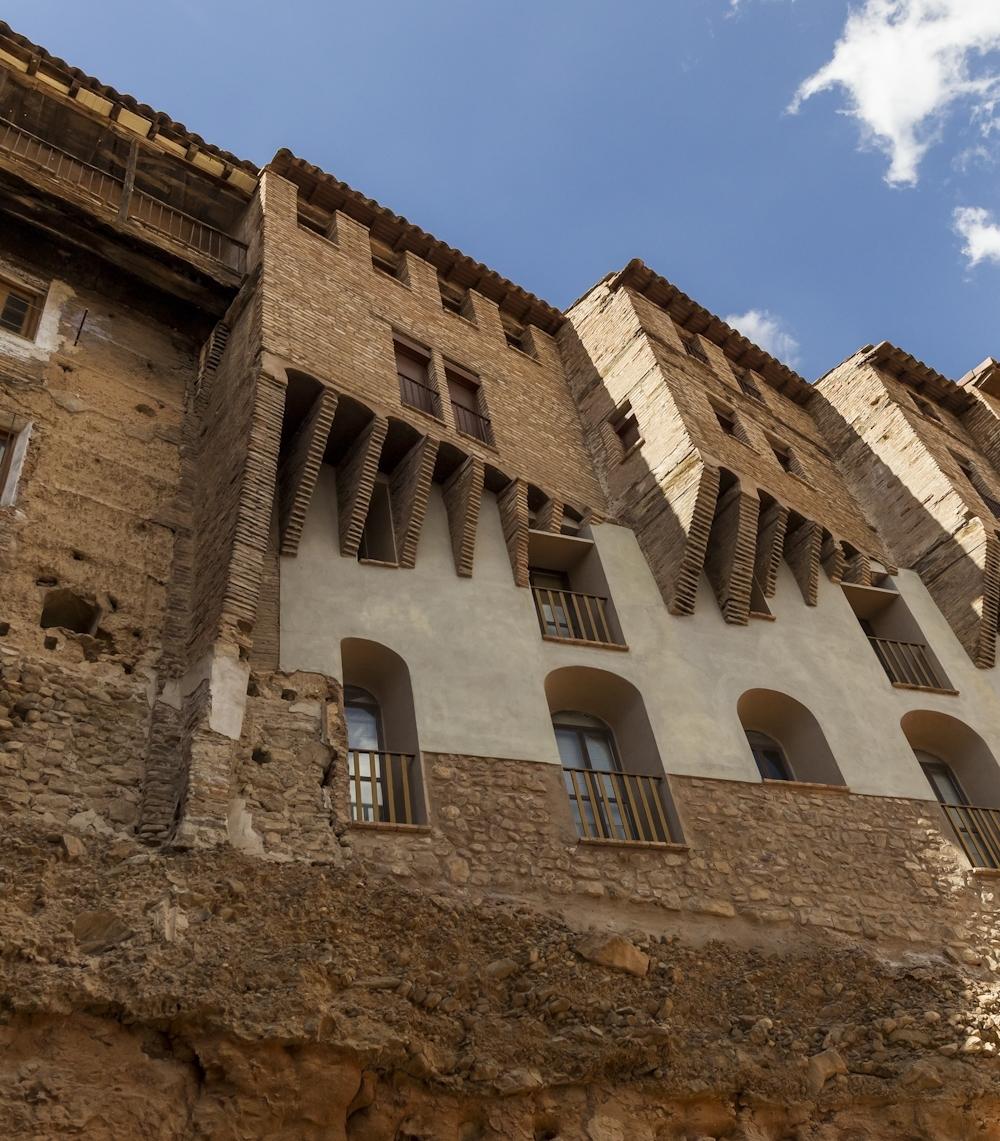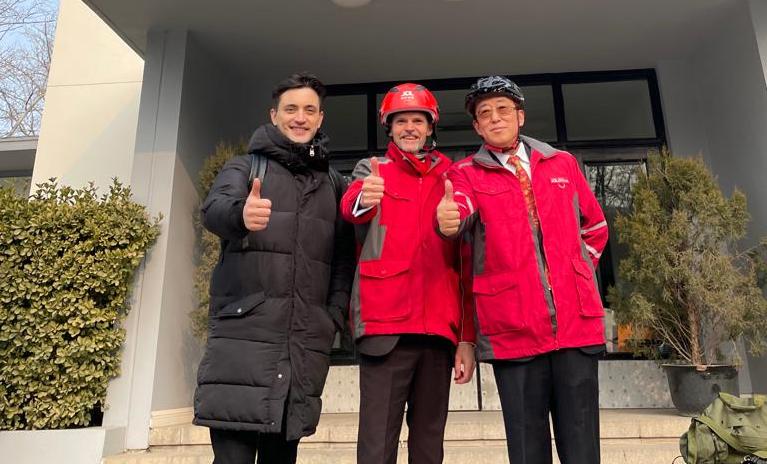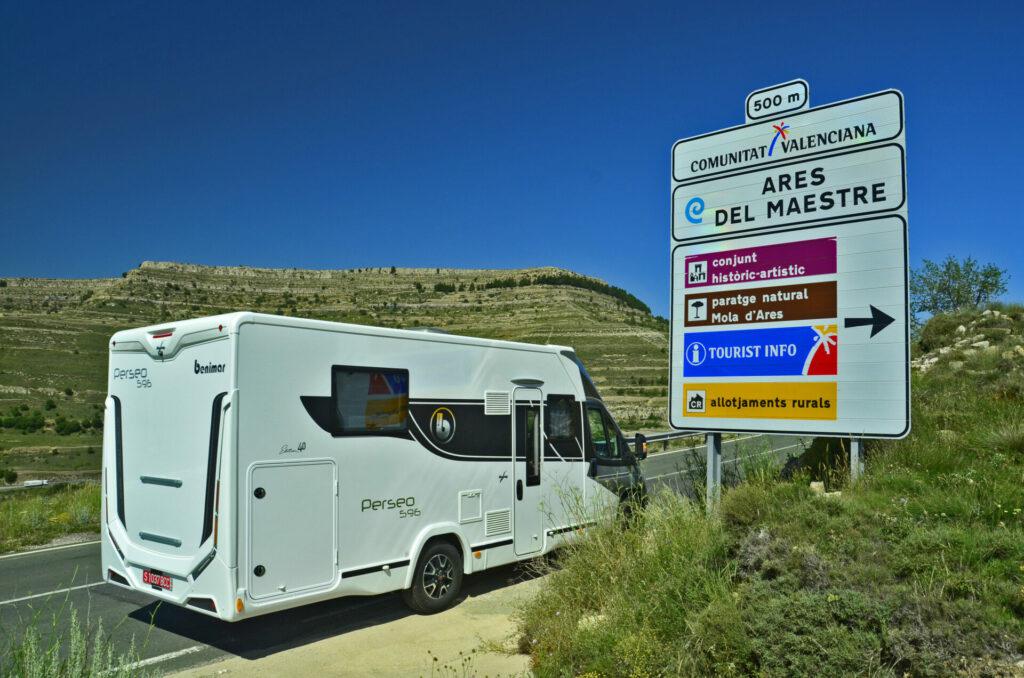Travel back in time through the tastiest and least known Jewish quarters in Spain
A sharp north wind has been blowing all morning. At the top of the dome of Santa María de la Huerta, the cathedral of Tarazona, this cold, dry and stubborn wind makes it very clear who is in charge at the foot of Moncayo. Climbing up to this peak also has its own. Pilar, the local guide, had already warned: "one of the flights of steps goes inside a corten steel tube as a chimney".
It's a little extreme, but the payoff is double. Halfway through, a whole collection of nude figures appears. The grisailles -paintings in gray tones with a sensation of relief- are an eccentricity "unique in a European cathedral". The other, priceless, are the views of this monumental city with a very long history. On the other side of the Queiles River we see how the medieval city rises. It is there where the adventure of deciphering the intricate map of passageways, alleys and hanging houses of the Jewish quarter of Tarazona begins. The aljama was one of the most prosperous and important in Aragon.
The access to this winding neighborhood was defended by walls with several access points. Today, a plaque on the floor of the Red de Juderías de España announces to the traveler that he is about to travel back in time. The old Jewish quarter extends next to the Zuda, the old Muslim fortress, which after the Christian conquest became the emblematic Episcopal Palace. The heritage, always straddling the three cultures, is overwhelming.
The streets of Los Aires, Rúa Baja and Rúa Alta, where the synagogue was probably located, evoke that chaotic-looking medieval network... or not so much: "the callizos were four cubits long", explains Pilar, placing her arms in jug. "It was the necessary space so that you did not collide with anyone."
Going down Calle de la Juderia, the Hanging Houses of Tarazona appear above, with the permission of those of Cuenca, where the families of the nobility resided. They are houses built on the same rock, with facades overhanging the Jewish quarter that from 1440 would move closer to the river, around the Plaza de los Arcedianos, drawing the new Jewish quarter, the last refuge of the Sephardim until their expulsion.
The illustrious Jews of Tudela
In 1492 many Jews moved to the nearby kingdom of Navarra, where they would be under protection for another six years. Tudela, the next stop on our route, was then the most important Jewish quarter in the foral community. Now, when 1498 arrives, the options for the Jews are to convert or say goodbye to Sepharad.

In the cathedral-museum of Tudela, the guide, Amaya, remembers what conversion means: "It is getting rid of everything that has to do with your past. Even so, they are singled out and discriminated against. No one can hide their origin because their names are written on the blankets that hang from the parishes". Blankets like the one preserved in the cathedral of Tudel and that can be seen today in the Jewish room of the Romanesque cloister. "That's where the expression pulling the blanket comes from," explains the guide.
It is just one of the surprises that Santa María de Tudela has in store that leaves visitors overwhelmed from the very first stone. Only the carving of the White Virgin, a polychrome image from the 12th century almost two meters high and one ton in weight, is enough for a Netflix series. Excuse the spoiler: hidden for millennia, it was found by chance in 1930 behind the main altar.
Although for stories the ones told by the Gate of Judgment and its 122 voussoirs, especially those that describe in great detail the punishments (and torture) that the deadly sins entailed in the 13th century. Greed and usury take much of the leading role and are related to the trades of money changers, moneylenders or bankers exercised mainly by the Jewish community.
Now, the two Jewish quarters of the city saw not only rich figures grow up, but also educated and influential. This is the case of the great poet Yehudah Halevi, the versatile intellectual Abraham Ibn Ezra, "the Tudelano Leonardo da Vinci" and, most famously, Benjamín de Tudela. The traveling chronicler has a street where the old Jewish quarter is supposed to have been. Look on the map for the Plaza de la Judería, which is pedestrianized, and the streets Hortelanos and Fuente del Obispo, very close to the Plaza de los Fueros.
There are no physical traces. It is as if the wind had taken them. But there is a documentary flow of transactions, sales, loans... all that mundane string of economic life of the Jews in Tudela in the Middle Ages. Then, as today, the Ebro River fed body and spirit. That is why you have to cross the iconic stone bridge, a historical legacy of Muslims, Jews and Christians. The views over the city are great.
Calahorra, the city of vegetables
Following the Ebro, the paths of Sefarad take us to Calahorra, the city of vegetables. Here the north wind dries the peppers, which is nice. Because in this fertile land, binge eating vegetables is non-negotiable. The La Rioja town has been an industrial canning empire and proof of this are the unique houses that dot its streets with more power. It was in the tailors where the Jews began to gather.
The old Jewish quarter and its curved streets are perfectly identifiable by the red cobblestone. However, the great legacy of the Jewish presence is hidden in the Cathedral of Santa María which, among many jewels, keeps the Torah of Calahorra. "There are two fragments, the largest of 80 by 60 cm or so, from the book of Exodus," explains Father Ángel, the archivist. The fifteenth century parchments have been preserved thanks to the fact that they were reused as linings in the binding of two books. Who would hide them? There is also material for a series there.
Estella-Lizarra, daughter of the Camino
In Estella-Lizarra, as in Calahorra, the vestiges of the Jewish aljama are not in sight. It is known that the old synagogue of the first Jewish quarter called Elgacena, from the 11th century, was located where the church of Santa María Jus del Castillo stands today, a Romanesque jewel. There are remains of the wall of the new Jewish quarter above the Church of the Holy Sepulchre, built (although unfinished) by tanners, the most important activity in this daughter city of the Camino de Santiago.
From here we follow the Ega river to the picudo bridge, the image of the postcards of Estella-Lizarra. It is where the Rúa starts, a street with shops and inns that cater to pilgrims. The locals affectionately call it the fridge for reasons obvious to the traveler as well. Not to be missed is the house of Fray Diego de Estella, with its Plateresque façade, which houses the Casa de la Cultura.
Pilgrim or not, when you reach Plaza de San Martín you must also climb the 69 steps that lead to San Pedro de la Rúa, the revered church of artisans. Its cloister can be read like a comic that narrates the exploits of saints, warriors and tamers... Once again, a lot of material for series fans.
PRACTICAL GUIDE
Where to sleep. At the Hotel AC Ciudad de Tudela (www.marriott.com). From 112 euros/night. And in La Rioja, at the Parador Nacional de Calahorra (parador.es). From 100 euros/night.
Where to eat. In Tarazona: La Merced de la Concordia (lamerced.info). traditional cuisine. In Tudela: Treintaitrés restaurant (restaurante33.com). The best of the garden signed by chef Ricardo Gil. In Estella-Lizarra: Casanellas Gastronomic Workshop. Preparation of dishes live.
What to read. Flavors of Sepharad. Traditional Sephardic cookbook with 72 recipes. Author: Javier Zafra.
What to buy. Saedile ceramics, with pigments and medieval themes (Sephardic, Mudejar, Andalusian), by the potter Néstor Pablo.
More information. On the website of the Network of Jewish Quarters in Spain - Caminos de Sefarad, the Association of municipalities with Jewish heritage: redjuderias.org
You can follow El Mundo Viajes on Facebook, Twitter and Instagram
According to the criteria of
The Trust Project






